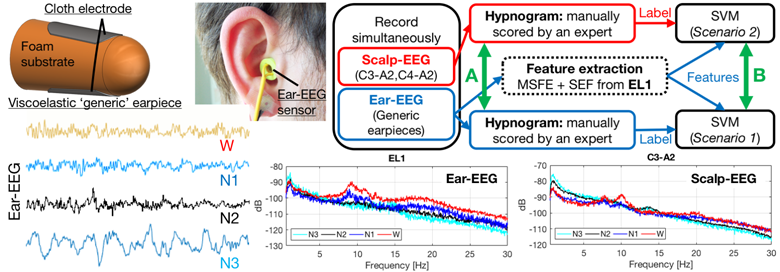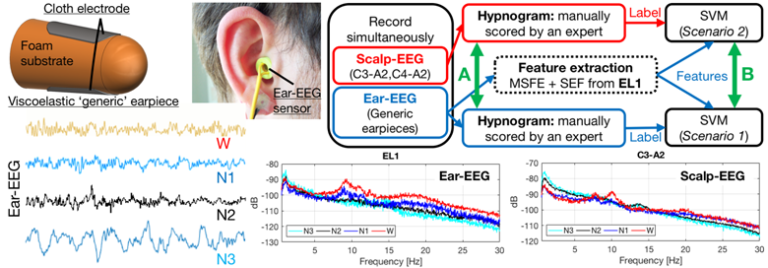
The monitoring of sleep patterns without patient’s inconvenience or involvement of a medical specialist is a clinical question of significant importance. To this end, we propose an automatic sleep stage monitoring system based on an affordable, unobtrusive, discreet, and long-term wearable in-ear sensor for recording the electroencephalogram (ear-EEG). The selected features for sleep pattern classification from a single ear-EEG channel include the spectral edge frequency and multi-scale fuzzy entropy, a structural complexity feature. In this preliminary study, the manually scored hypnograms from simultaneous scalp-EEG and ear-EEG recordings of four subjects are used as labels for two analysis scenarios: 1) classification of ear-EEG hypnogram labels from ear-EEG recordings; and 2) prediction of scalp-EEG hypnogram labels from ear-EEG recordings. We consider both 2-class and 4-class sleep scoring, with the achieved accuracies ranging from 78.5% to 95.2% for ear-EEG labels predicted from ear-EEG, and 76.8% to 91.8% for scalp-EEG labels predicted from ear-EEG. The corresponding Kappa coefficients range from 0.64 to 0.83 for Scenario 1, and indicate substantial to almost perfect agreement, while for Scenario 2 the range of 0.65–0.80 indicates substantial agreement, thus further supporting the feasibility of in-ear sensing for sleep monitoring in the community.

